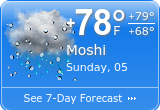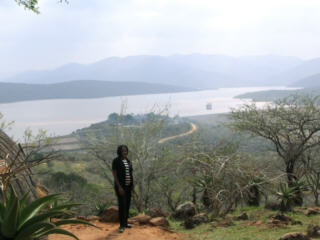Preparing For Our African Adventure
African Adventure
June 19, 2015 - July 4, 2015
It is funny to me how Traci and I will react so differently to a situation. Many years ago, we visited a church where the pastor invited the congregation to hang around after service to check out his presentation of his Mt. Kilimanjaro climb. As he presented his slides (using a slide projector – yes, that long ago), I was really fascinated with his experiences on the mountain. At the same time, I thought to myself, “better him than me”. I had no interest in climbing Kilimanjaro or any other mountain. Traci was also fascinated by the presentation but on the contrary, her reaction was “That would be so cool to climb Mt. Kilimanjaro.” She could not understand why I did not share her ambition. There was a similar mismatch of interests a few years later when our brother-in-law invited us to go for a run with him. Afterwards, I thought to myself, “Whew. I’m glad I won’t have to do that again.” By contrast, Traci said, “That was so cool.” She was instantly hooked on distance running. Fifteen years later, she still runs marathons and distance runs regularly as one of her favorite pastimes. This all ties into how we ended up in Tanzania climbing Mt. Kilimanjaro. In November 2013, we were at the pasta party of one of Traci’s running clubs the evening before the Richmond Marathon in Richmond, Virginia. Marie Frances, who has been organizing the Mt. Kilimanjaro Marathon in Tanzania since 1990, was there to promote her event. Despite the name, the Mt. Kilimanjaro Marathon does not take place on the mountain. It takes place on the streets of the nearby town of Moshi. Traci picked up one of the flyers and saw that in addition to the marathon, there would be an opportunity to climb the mountain, do a bike race, and do a safari. Members of Traci’s running club were considering traveling to Tanzania to take part in the 2015 Mt. Kilimanjaro Marathon. Traci, once again, began talking to me about “how cool it would be” to climb Mt. Kilimanjaro. I did not think she was serious about attempting to climb the tallest mountain in Africa (4th tallest in the world). Even though Mt. Kilimanjaro is a non-technical climb (e.g. - does not require ropes, crampons, ice picks, etc.), neither one of us had any serious experience with outdoorsy stuff like hiking and camping. It wasn’t until a few days later when I came home and found the Tanzania flyer attached to our refrigerator that I realized Traci was serious about this trip.
It became obvious to me that climbing Mt. Kilimanjaro was a bucket list item for Traci. I can relate to having a bucket list item that other people do not understand. Traci has accompanied me on my off-the-beaten path bucket list trips that she had no interest in such as the time we spent the night in an ice hotel and went dogsledding. Here was my opportunity to show my appreciation to her for supporting my dreams back then. I decided that if she was going to climb Mt. Kilimanjaro, I was going to be right there with her. Besides, I could not see myself sitting in a hotel for six days wondering how she is doing on the mountain.
We signed up for the Tanzania trip package that included the Mt. Kilimanjaro climb and the 5-day safari in addition to the Mt. Kilimanjaro Marathon (Traci only). When we found out that we would be changing planes in Addis Ababa, Ethiopia, we inquired about doing a day tour there. After all, we did not know if we would ever have the opportunity to see that part of the world again. Ethiopia was not part of Marie Frances' trip package but she put us in touch with an outstanding Ethiopia-based tour company that gave us excellent tours and took great care of us during our two days in Addis Ababa. In the end, Traci and I had signed up for a 19-day trip. It was the longest we have ever taken. There was quite a bit of preparation required for this trip (visas, immunizations, equipment purchases, etc.). I have provided details on my Preparing For Our African Adventure page. This trip was not one that we will soon forget.
Arriving in Tanzania
Our flight to Tanzania was on Ethiopian Airlines. It consisted of a 13-hour flight from Washington Dulles Airport that had us landing at Boles International Airport in Addis Ababa, Ethiopia at 7:15 the next morning. We waited about two hours at Boles in a terminal that had a serious moth problem. We were then shuttled out to the tarmac to board the plane for our 2.5–hour flight to Kilimanjaro International Airport in Tanzania.
Kilimanjaro International Airport is a small airport located about two hours from the mountain. It seemed like our large Boeing 757 jet pulled right up to the curb of the airport to let us off. The passport control line moved rather quickly. The friendly lady at the booth greeted me in Swahili to which I replied “Jambo” (Hi). She continued in the language as sort of a quiz when she asked how I was. I remembered the phrase from the Swahili tutorial YouTube video I watched a few days before the trip. When I answered in Swahili she gave me a big smile and a thumbs-up and then stamped my passport. That little exchange was pretty much the extent of my knowledge of the Swahili language. Fortunately, most of the people we encountered in Tanzania could speak enough English to help us.
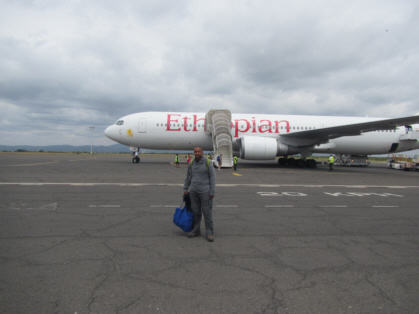
arriving in Tanzania
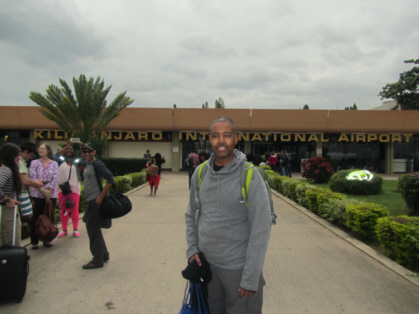
Kilimanjaro International Airport
Ethiopian Airlines allows each passenger to check up to two 50-lb bags free of charge. I was happy to see that all four of our checked bags had arrived. I had read trip reports from people who arrived in Tanzania to climb Mt. Kilimanjaro but their luggage did not arrive. As a precaution, Traci and I wore our hiking boots and hiking pants on the plane. Although we had all of our luggage, I noticed that there was a tear in the duffle bag I brought for the climb. It was not a big deal – especially because Traci had recommended that I bring duct tape on the trip. I was able to patch my duffle bag but I decided to file a claim at the baggage department anyway. This was my introduction to how slow the administrative process can be when it comes to baggage claims. There were two people ahead of me in line but the process took 2 hours! One of the ladies in front of me was from our group. I felt so bad for her because none of her luggage arrived and she was not wearing clothes suitable for climbing the mountain.
I continued to be impressed with how patient and friendly the people of Tanzania are. Nelson, the manager of the Lutheran Uhuru Hotel and Conference Centre where we would be staying, met our group at the airport. He arranged transportation for us to get to the hotel. He sent those from our group who did not have luggage issues ahead of us while he waited around at the airport until the rest of us received the proper documentation for our lost or damaged bags.
The ride from the airport to the Lutheran Uhuru Hotel took approximately 45 minutes. Tanzanians drive on the opposite side of the road than we do in the U.S.. Motorcycles, taxi vans, and walking seem to be the predominant forms of transportation. Our ride to the hotel was through rural lands. There were people herding cattle and people carrying things on their head. We saw many fields filled with sunflowers and maize (corn). We saw crowded country markets on dirt fields. Occasionally, we saw small shopping centers. These consisted of a few small concrete buildings or wooden shacks crowded together on a dirt parking lot. The Coca Cola logo seemed to be on everything from chairs to the sides of buildings.
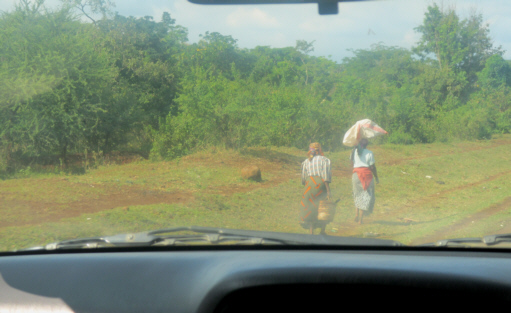
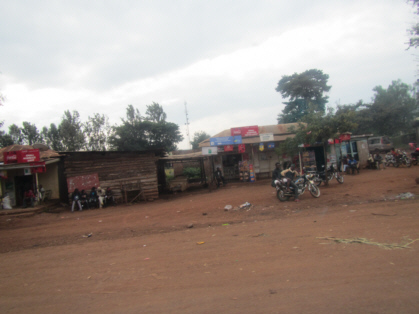
The Lutheran Uhuru Hotel is situated in a shaded Moshi suburb. It is next to the Bishop’s house. I don’t think we ever rode by the house during our stay without at least one person on our shuttle announcing that the Bishop lives there. The hotel consists of several two-story motel-like buildings on well-maintained landscaping. The property is surrounded by farms containing corn fields, sunflower fields, and banana plants. I heard strange bird calls often. I even saw large marabou storks occasionally.
Our room was basic yet comfortable. It reminded me of a college dorm room except this room had a bathroom. There was no carpet. In fact, I don’t think I saw carpet anywhere throughout our visit to Tanzania. Instead, our flooring was semi-gloss painted concrete. The furniture was made of thick dark wood. Our room had twin beds. A mosquito net hung from the ceiling above each bed. This was the first time we have ever used mosquito nets. I am not so sure we needed them on this trip. It was the dry season. We barely saw any insects. Furthermore, since Tanzania is below the equator, its seasons are opposite of ours in North America. Since we were there in June, the weather was dry and not oppressive. The daily temperatures were in the 70’s and 60’s. The room had a fan but we did not need to use it. We often relaxed on our balcony to take advantage of the pleasant weather.
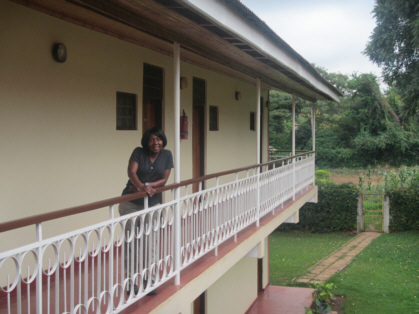
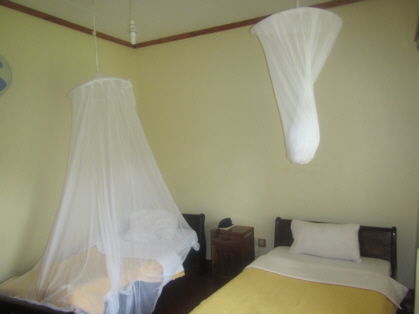
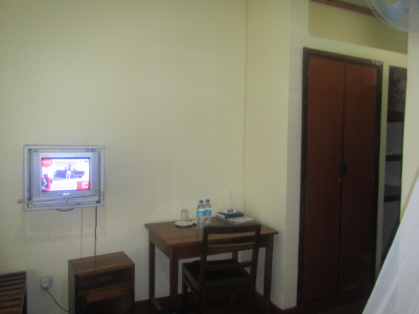
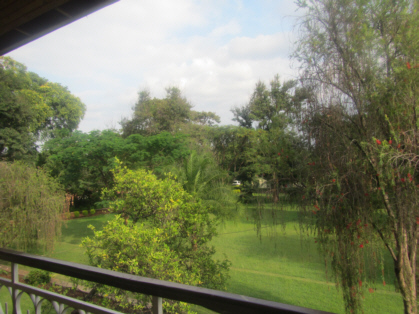
There was a switch outside the bathroom that we needed to turn on to get hot water. We normally did not leave it engaged because the tank would become noisy. It could take up to 30 minutes to heat the water but once it was heated, we had to be careful not to get scolded when using the shower or the sink. We were given large towels but no wash cloths. After many years of international travel, I have noticed that wash cloths are hard to come by outside the U.S..
Our room had a television in a cage-like structure attached to the wall. I don’t think it got more than seven channels. There was an Aljazeera news channel in English and two other English language channels. The rest were in Swahili.
There is an internet café on the premises and Wi-Fi. There was a small fee for the usage of either. The internet connection was hit-or-miss.
We were provided with two bottles of water in our room each day. This was convenient since we were cautioned not to drink the tap water in Africa. We had to use the bottled water for drinking as well as for brushing our teeth. Other precautions we had to take to stay healthy were things like no ice in our drinks, only eating cooked vegetables, and only eating fruit we could peel.
All our meals for the trip were included. While at the Uhuru Hotel, we ate breakfast, lunch, and dinner buffet-style in the dining hall. There was nothing uniquely Tanzanian about the food we were served. Dinner and lunch normally consisted of soup, vegetables, rice/noodles, meat, and fruit for dessert. We also got a free soda or bottle of water with our meal. Breakfast was the same each morning – cereal, fruit, bread, potatoes, sausage, and cook-to-order omelets. There was also the Green Bamboo Barbeque Restaurant on the premises. It looked and smelled good; however, Traci and I did not eat there since our meals in the dining hall were free.
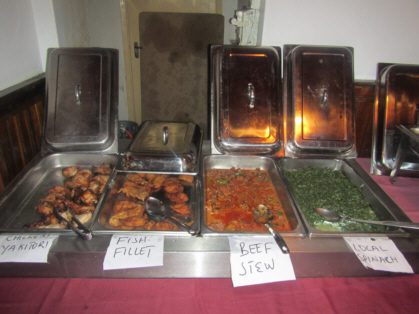
buffet-style dinner in the dining hall
